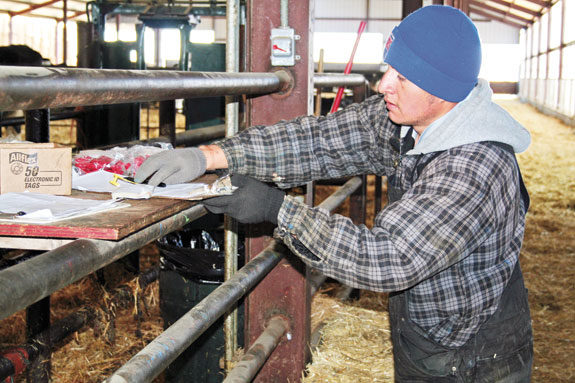In a recent edition of El Lechero, I wrote an article for your herdsmen clarifying that following treatment protocols is not only a guideline, it is the law about treating sick cows on your dairy. I identified that when protocols are not followed, overuse (unnecessary expense), violative residues and illegal use of medications prescribed by your veterinarian are costly consequences. But to get to that point, you must write, train and monitor treatment protocol use by your herdsmen on your dairy. Write treatment protocols Whether an excuse or well-intentioned confidence in your herdsmens’ experience, too often I find no written treatment protocols on dairies that I visit. “He knows how to treat sick cows” or “My vet handles that” or “Those are just picky details” are not adequate explanations for lack of written treatment protocols.
If you haven’t sweated out writing how cows are to be treated on your dairy, you haven’t really taken the responsibility for drug overuse, residue potential and illegal drug use that could cost you thousands of dollars. Your herdsmen need (and want) guidelines and the clarity they provide.
Your veterinarian must be involved with drug use decisions. The FDA has identified that written protocols are a legal agreement between you and your veterinarian regarding drug use on your farm. The best written treatment protocols I see on dairies are practical guidelines that include:
1. Symptoms and diagnosis (e.g., foot rot or hairy wart, not lameness; mild metritis vs. severe metritis; mastitis based upon severity of symptoms)
2. Specific treatments with name of medicine, dose, route of administration and duration of therapy
3. Option for additional non-violative supportive therapy, depending upon severity of the condition
4. Milk and meat withhold times
These can be simple, clear and practical. They must be available to your herdsmen so they can refer to them as necessary. And they must be reproducible upon FDA investigation. But they are yours and need to reflect what you expect your herdsmen to implement daily as you delegate the responsibility of treating sick cows on your dairy to them.
Train your herdsmen
Rely upon your herdsman’s experience, but channel that into your written treatment plan for your sick cattle. Many well-intentioned herdsmen arrive at their level of expertise through “the school of hard knocks.” Experience is a great teacher, but often it is complicated by lack of science and biased by perception; “she needs antibiotics,” when the fact may be that she really has no elevated temperature, is an experienced, but incorrect perception.
“One more day on treatment will make the milk better” is an experience decision that may violate a protocol, extend a withhold time and add unjustified expense to treatment costs and milk discard.
Your herdsmen need definitive guidelines and training to correctly diagnose the problem, its severity and the cost-effectiveness of treatment. In today’s dairy economy, provide them with initial “treat or not treat” guidelines. Then when treatment is economically justifiable, give specific treatment guidelines.
Keep the door open; if your herdsmen feel these treatments aren’t effective, be sure they have the opportunity to talk to you or your veterinarian about specific treatment failure. We are all on the same team (owner, herdsmen and veterinarian), and we all want treatment success within guidelines that control your cost and residue risk.
Monitor your herdsmen and protocol implementation
Are you ever around when your herdsmen treat sick cows? An important component of managing is monitoring work and workers; it’s the most consuming part of a manager’s life. Don’t wait for a huge drug bill or a violative residue to stimulate you to get out and watch how your herdsmen treat cows.
You may be so busy that you are removed from the day-to-day routine of cowside treatments. But if you’ve worked with both your veterinarian and your herdsmen to write out the treatment protocols, you are close enough to “the action” to monitor it. Either you or a manager has to be responsible to see that your herdsmen are working correctly.
“Trust, but verify.” Delegating treatment responsibility to your herdsman involves giving him treatment guidelines and monitoring to be certain it’s being done correctly.
I’ve worked with herdsmen on large dairies for more than 25 years and have come to respect and appreciate the excellent job most do. But as dairy owners, you must manage risk and manage work and the key workers that do it. You may view treatment protocols as guidelines, but I submit you are wiser to view them as the law for how animals are treated on your dairy. PD
PHOTO
If you’ve worked with both your veterinarian and your herdsmen to write out the treatment protocols, you are close enough to “the action” to monitor it. Either you or a manager has to be responsible to see that your herdsmen are working correctly. “Trust, but verify.” Photo by PD staff.

-
Dr. Tom Fuhrmann, DVM
- Vet / President
- DairyWorks
- Email Dr. Tom Fuhrmann, DVM






